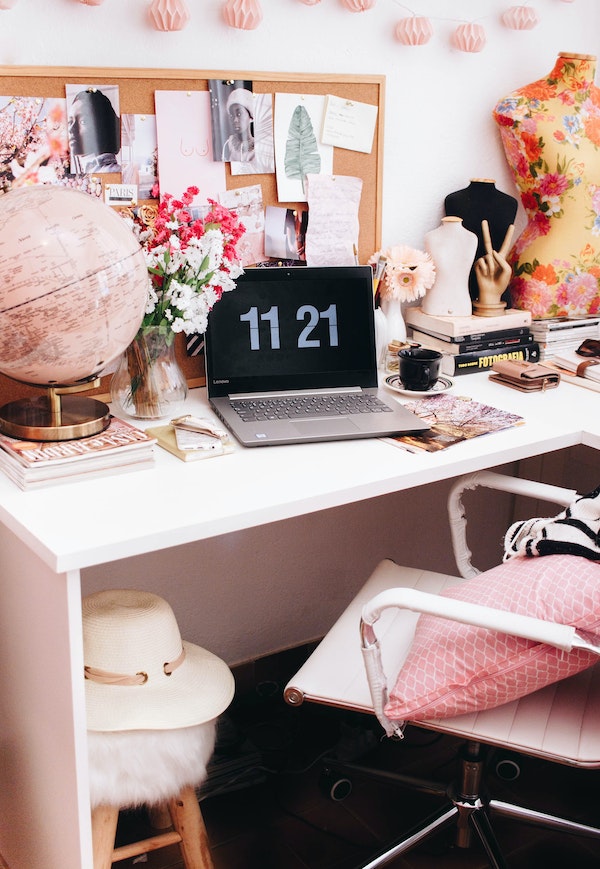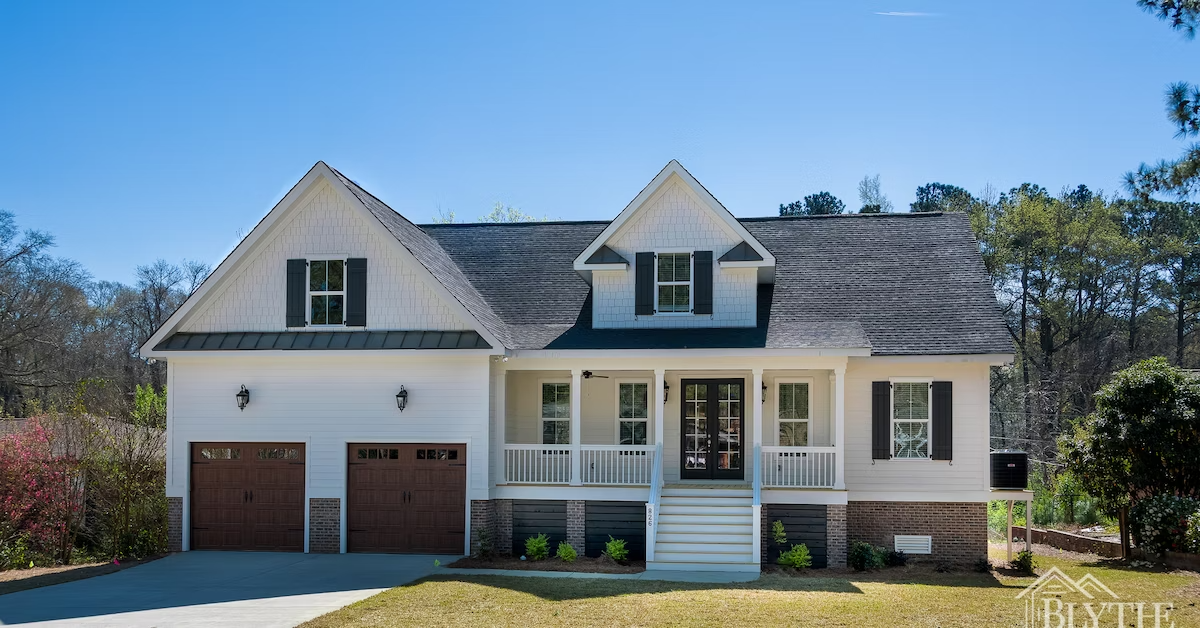Families’ needs are changing this year more rapidly than at any time in memory because of COVID-19, quarantining, and social distancing. The way we live, how we work, and where we learn are new. It’s like our world has been turned upside down and no one really knows if we will ever go back to the old “normal.”
With social distancing continuing and many people being home much more each week, our lifestyles are changing. So our homes must change to fit our new needs.
Pandemics always change architecture and lifestyle
The Spanish flu of 1918 brought us the powder room so that visitors and delivery men could use that half bath instead of contaminating the family bathroom after they had been in numerous other homes where infection may have spread.
Cholera brought wide front porches, underground sewage systems, and clean water delivered to homes through pipes to keep raw sewage from contaminating rivers and drinking water. Roads were paved over the underground sewage pipes and new parks were constructed so people could get fresh air and sunshine.
Because of tuberculosis and the Spanish flu, homes were redesigned to encourage cleanliness (with smooth, easy-to-clean surfaces), easy sanitation, and increased light and air. Balconies and sunning roofs became necessities for people to be able to get outside more easily in urban areas. Closets became a way to keep homes free from dust and to help keep them more sanitary.
White subway tile became a way to show that restaurants and homes were clean and free from dirt and disease. And linoleum replaced hardwood floors and carpets for the easy of cleaning and sanitization.
How might COVID-19 change the way we live and how we build new homes? It will be interesting to see the transformation it brings to design and architecture.
8 ways COVID-19 is changing home design
The open home design has been popular for decades. It gives a big, open, airy feel. It makes the house seem bigger. It’s convenient to have the kitchen open to the living space so whoever is cooking can be involved with all the family or friends and not even have to miss any of the movies on TV. But preferences are changing now. The open concept may not meet people’s new needs as well.
1. More private Zoom rooms
With more family members at home for work and school, private space for each family member for online meetings is a huge need. If everyone is in the same space, it’s difficult to have simultaneous online meetings without being a distraction to each other. This means people are moving away from open floor plans to homes with more distinct rooms.
Families are looking for homes with more rooms and more separation between the rooms so that each family member has somewhere to go for privacy. A large room isn’t necessary. Even a closet could be converted to an online conference room if needed. Homebuyers may purposely choose to design several smaller separate rooms for online meetings and online school.
2. Dual home office spaces
Many homes already had one home office or study space. It’s possible to have two people work from the same office. But if both people need to be on the phone a lot or have online meetings, one space isn’t ideal. Or if one person needs to have clients visit the space, they may need more privacy, as well.
With two adults vying for home office space, some homebuyers are looking for two separate home offices so they can both accommodate their work needs at home.
This could mean two offices in the same home on the main floor. It could mean one office on the main floor and one in the basement.
Some people find they need a bit more separation between home and work. This could mean a separate office building in the backyard. Or, some innovative architects are designing underground offices for the front yard. For even more functionality, these offices could serve as storm shelters, as well, if they are constructed properly.

3. More home learning spaces
Millions of families have children learning at home in one style or another this year. This is a dramatic shift away from children learning at public schools or private schools on-site. So parents want homes that can accommodate study areas for all of their children.
Students need areas for writing, reading, art, projects, and computer time. A large area with multiple desks or a large table could work for independent working time. A basement, FROG, or extra bedroom could work for this.
But each child will need the ability to have private online meetings if they are doing virtual or online school. Parents may decide to set up computers in the children’s bedrooms. Or they may prefer to have smaller separate rooms for online meetings to keep children away from their computers at night.
Some parents may consider constructing school buildings in their backyards for their children and/or their friends if they are bringing in a teacher or nanny for a micro-school or if they have decided to have a pandemic pod learning style.
One really wonderful aspect of having your children learn at home is that you are no longer confined to a specific geographical area. You can live wherever you would like to which gives you a lot more freedom to choose to build on your own lot and location.
4. Room for extended family
With more kids staying home for college, grown children returning home from big cities, and elderly relatives wanting to avoid nursing homes if possible—more families are welcoming extended family and loved ones into their homes. They are pooling financial resources. And now more than ever, they are looking for safe places for extended family members to stay in their homes where different generations/individuals can quarantine or self-isolate if necessary.
Basement apartments, backyard guest houses or cottages, and private apartments in the home are gaining popularity as families look for alternative living arrangements for loved ones. Multi-generational living looks like it is here to stay. There are so many benefits of having different generations together in one house or on the same property, this may be a really good thing for families.
5. Home gym space
With social distancing being so important this year, gyms aren’t always open. Sometimes they have to close due to quarantine restrictions. But even if they open, people may be more hesitant to work out around other people who may be infectious.
Home gym equipment is flying off of store shelves as people scramble to set up exercise space at home. A few home gym ideas include using the FROG, attic, a large closet, part of a finished basement, or a spare bedroom that is not being used for something else.
One option is to combine home gym equipment with a guest bedroom and use a Murphy style bed to save space for working out. Or homeowners could create a separate building in the backyard for working out called an “accessory dwelling unit.”
As long as the workout space is sturdy enough to hold the equipment you want to use, has enough wall mirrors, great temperature control, and enough lighting, you can be creative with the kind of home work out space you design. Then you can add the luxuries like extra equipment, a beverage refrigerator, a rock-climbing wall, or a high tech sound system and large TV.
6. Extra storage space
Something many people learned in 2020 is that they need more storage space than they thought before COVID-19. If people are cooking most of their meals at home, they need big walk-in pantries to store all the non-perishable food, paper products, and cleaning supplies.
Homebuyers are re-thinking kitchens by adding appliance garages to store all the new cooking appliances they need. And some are even going for second dishwashers for extra dish storage and second refrigerators to keep shopping trips to the grocery store at a minimum.
Built-in cabinets, cubbies, closets, window-seats, and breakfast nooks with storage are perfect for storing all the extra work and school supplies and hiding them away. Just because people have more things at home, doesn’t mean they want to see them left out everywhere all day. It’s important to have places to store things when the workday and school day are done so the house has a peaceful atmosphere.
People also want extra garage storage for bikes to ride with families, extra storage for paper products, and to provide workspace during home projects. They’d also like more space in the garage so they can actually park their cars and protect them from weathering while they aren’t using them as much. And if they have other family members staying with them, they may need storage space for other people’s boxes and extra furniture, as well.

7. Private outdoor living space
Sunlight indoors is good for people. But getting outside into the great outdoors is even better! People have an intrinsic need to connect with nature, breathe fresh air, and see plants and wildlife.
Outdoor dining rooms, living rooms, and kitchens are more popular than ever as people are home more often. It’s refreshing to have a different place to socialize and eat. And if families are cooking at home a lot more, having an outdoor kitchen with a grill makes home cooking a lot more fun and healthy.
During quarantine, people realized more than ever how valuable it is to have outdoor living spaces around their homes. Having a deck, patio, or an outdoor pool gives family members another place to go when they need to get away from everyone and it gives the whole family a place to gather and have fun together that gets them out of the home into different scenery.
Having a big yard can be a major plus because family members can play sports or games together in a large outdoor recreation area.
If a home doesn’t have a large yard, people can still benefit from having courtyards, roof gardens, micro-backyards, porches, or balconies. Some people are bringing the outdoors in and creating indoor gardens to bring the best of the outdoors in for everyone to enjoy.
8. Disinfecting entryways/mudrooms
This year, homebuyers want touchless home entry options or antimicrobial metals for doorknobs like copper. They want a space so family members can immediately take off anything that may be contaminated and clean up before introducing germs to the rest of the home.
For a lot of families, a mudroom may make the most sense for the primary family entry spot that has a sink in it or a powder room adjacent to the area where everyone can quickly wash their hands. Add a touch-free faucet and it is even easier to keep everything and everyone sanitized.
A family’s primary entryway needs a basket with disinfecting supplies, hand sanitizer, phone cleaners, and maybe even a UV light device to disinfect other items. It’s also the perfect place for a phone charging station and keys so no one forgets anything important on their way out the door.
More than half the home buyers in Gazelle Global Research’s America at Home Study, which was conducted in late April, said they wanted features like germ-resistant countertops and flooring, touch-free faucets and appliances, a better-equipped kitchen for cooking, and more storage for food and water.
Don’t forget natural light!
When people are at home much more, they realize how important more sunlight is for their mental and emotional health. Sitting in a dim, windowless room can feel like being in a prison or dungeon. Adults and children do best when they can see outside from their workspaces, especially if they can see some green grass and trees.
Natural light has many health benefits like increased immune system function, decreased stress, increased productivity, decreased depression, improved sense of wellbeing, and improved concentration. So when people design their new homes, they want to include more windows and bigger windows or skylights in their new dream home designs.
Not only does this improve the health of all the family members in the home, but it also increases the aesthetics, and can potentially add to the home’s overall value.
Is it a good time to buy a home?
Homes are selling like hotcakes in many areas of the country, especially in the suburbs, where prices are actually going up. People want to move right away and get settled into their new lifestyles with much more space to spread out, work, learn, and play.
With crazy low mortgage rates and people needing more space at home, it’s a great time to buy a pre-existing home or build a new home. The demand for new housing is at its highest growth rate in over a decade as of May 2020.
We have an analysis about whether it’s a good time to buy a home with COVID going on here.
Does your family need a more functional home soon?
Related
Senior Citizens Try to Avoid Nursing Homes in 2020
10 Must-Haves for a Learning Space or Classroom at Home
Create Your Perfect Outdoor Kitchen and Grilling Paradise
Planning for Enough Storage Space in Your New Home
Is Now a Good Time to Build a New Home with COVID-19?
10 Ideas for a Stunning Custom Home Office Design
Resources
This Buried Studio Office Makes Working from Home Look Luxurious by www.apartmenttherapy.com
Coronavirus Fears Shape Home Design by www.realestate.boston.com
What Will the Rest of the Year Spell for the Housing Market – the Washington Post
How Pandemics Spurred Cities to Make More Green Space for People – the History Channel
How Previous Epidemics Impacted Home Design – by www.architecturaldigest.com







